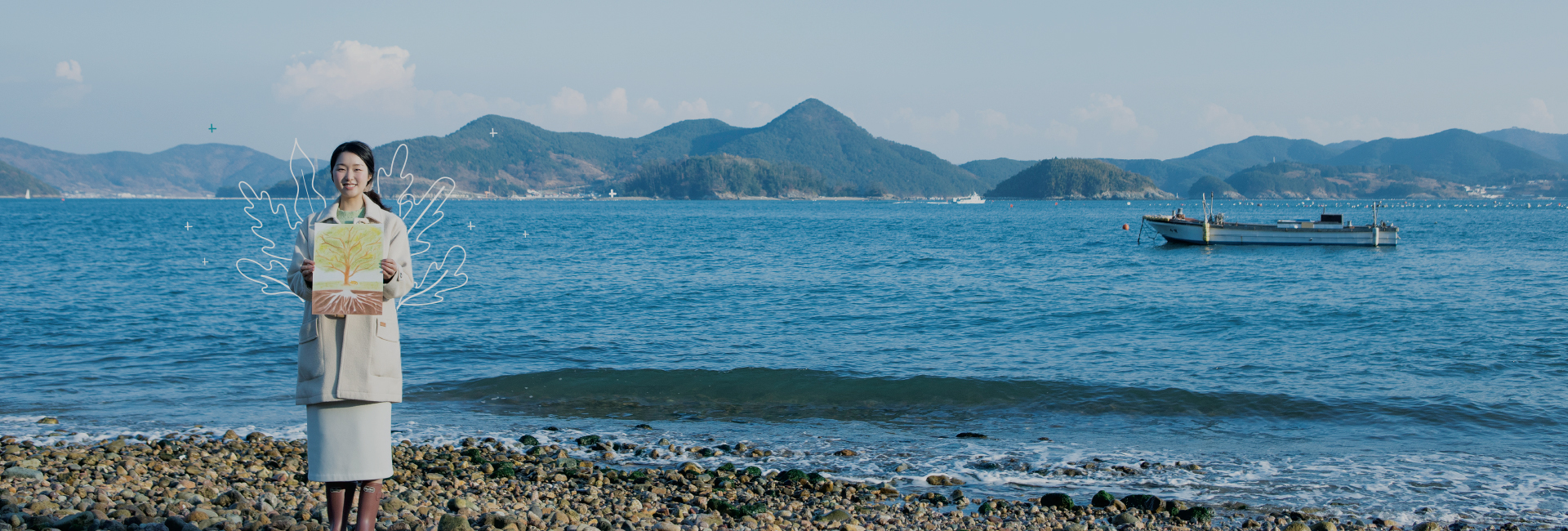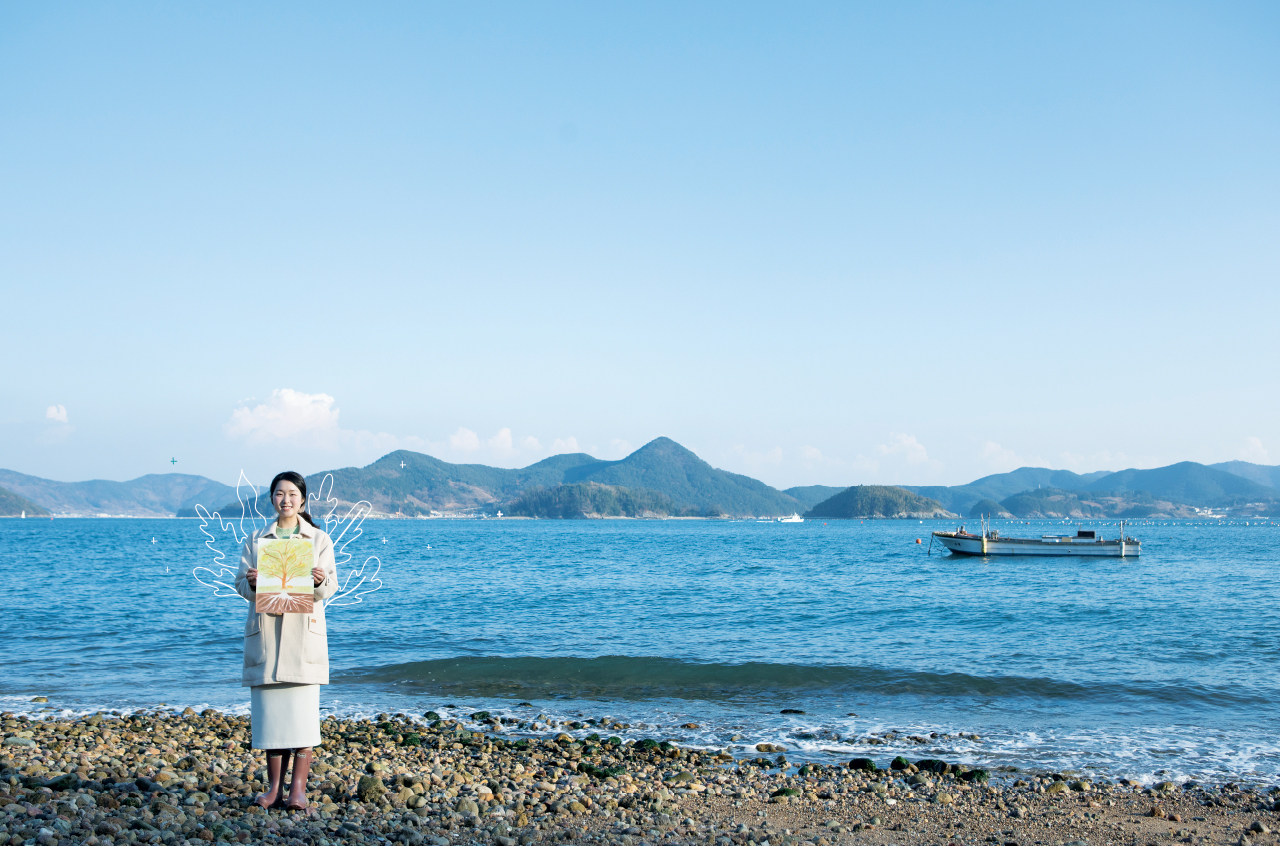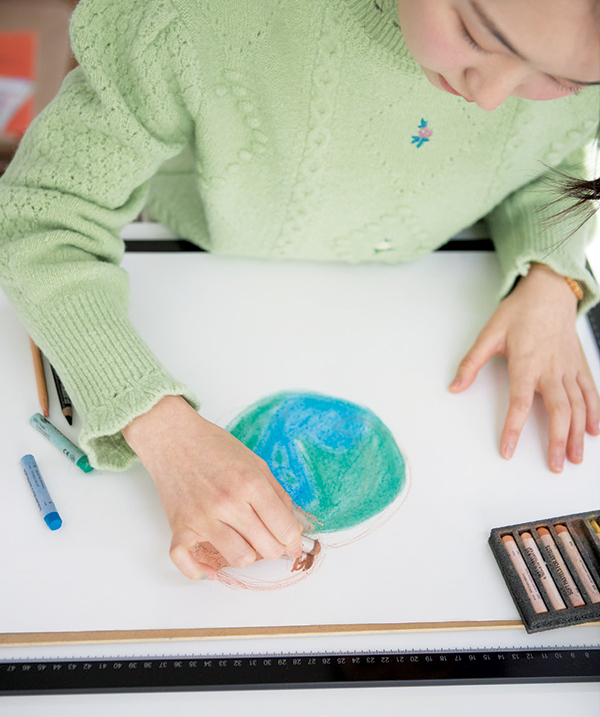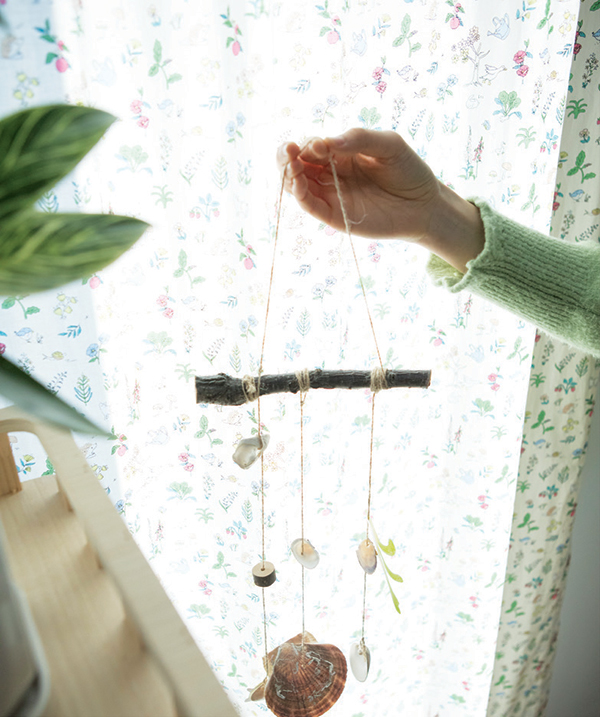
- Water, Nature and Humankind
- Natural Meeting
-
The 365 Day-a-Year
arbon Carbon Neutral Life of Kim Mi-jin,
a Carbon Neutrality Army member- Written by. Choi Hang-jwa
- Photo by. Kim Beom-ki
- So you want to practice carbon neutrality but don’t know how to begin? Some people suggest beginning by gathering things one no longer uses at home and giving them to neighbors who might need them. One such person is Kim Mi-jin, a member of the ‘Carbon Neutrality Army’ who lives in Tongyeong. Let's take a look at the life of this committed individual who practices carbon neutrality and thinks about the future of Earth, rather than opting for the immediate modern conveniences available to us all at any moment.

Determination to Protect the Beauty of Tongyeong
“I was surprised when I came across an old map of Tongyeong and realized that a lot of places here have been reclaimed from the sea. The thought crossed my mind that, in the future, our descendants might be surprised like me when they look at a contemporary map of the island. The natural resources of Tongyeong are bountiful, but they aren’t infinite. Instead of pursuing reckless, indiscriminate development, I thought that it was more important to make an effort to save and protect the island’s beautiful natural scenery.”
Here, the flowers and trees change beautifully with every season, the waves sometimes sound like an orchestra or a lullaby, and the sea glitters under the sun. Because I grew up gazing at the island’s dazzling scenery, I naturally developed a different perspective about the environment. Watching TV programs like Animal Kingdom and National Geographic when I was young taught me that we humans are sharing this Earth with an incredibly diverse number of living organisms. After reading books about land and deep-sea creatures, I felt heartbroken and sorry that some species of animals had become extinct while others were endangered by the ongoing changes on the Earth. Gradually, my thinking evolved from a human-centric view to a more Earth-centric view. From that moment on, I became more aware of all the pieces of trash littering the roadsides, and I began to pick them up and drop them in trash cans.
“When I was in high school, I went on a retreat that included a mountain hiking event. I saw a lot of trash on the walking trail that started at the entrance of the mountain, so I picked them up every piece one by one and stuffed them into my pockets. I had yet to get halfway to the summit, but my pockets were already filled with trash. At that moment, my friends also started to pick up bits of trash one by one. Eventually, by the time we had descended the mountain, we had picked up all the trash on the trail we had walked along. Although our clothes were dirty and we were smelly, I remember walking down the mountain, giggling and smiling with my friends.”
In Tongyeong, a civic campaign is being carried out to persuade people to participate in carbon neutrality with an eye towards spreading awareness of the climate crisis and getting people to adopt the principles of carbon neutrality in their everyday life. These people have become the Carbon Neutrality Army, and Kim Mi-jin is one of them. So how did she become a member? When she had an office job, an employee of the Tongyeong Sustainable Development Association, whose office was next to Kim Mi-jin’s, informed her of the existence of the Carbon Neutrality Army, and she thought it was a good idea. There was no reason to mull it over at length because she had already experienced the strong ripple effect of good deeds. Currently, around 2,700people are participating in the Carbon Neutrality Army and practicing carbon neutrality by carrying out various missions, such as sorting waste, using only paper cups, and conserving energy.
How to practice carbon neutrality
Kim Mi-jin says anyone can easily practice carbon neutrality and have fun doing it at the same time. These days, more and more people are becoming aware of environmental issues, and they are practicing environmental conservation activities in their daily lives, like using eco-bag or tumblers and reducing their use of plastics. Waste sorting can be even more efficient if people cut out the plastic ring and label when they dispose of plastic bottles. If plastic rings are not cut out and disposed of separately, they end up in natural habitats and can get stuck in the beaks of birds, ultimately causing death because the stricken creatures can no longer feed themselves. Cases have also been reported of plastic rings getting stuck inside the bodies of baby turtles, which then grow up into adult turtles with bodies shaped like a bottle. Tragedies like this are happening without us knowing about them. Therefore, Mi-jin has expressed her hope that people will participate in removing plastic rings because she believes that small daily habits can make a big difference when practicing carbon neutrality. It’s no surprise that this meticulous mindset is what has earned her the name “the Maestro of the Carbon Neutrality Army"
“In our town, we are carrying out a 365-day-a-year resource recycling campaign in front of a shade tree. I think it's a good example of how to practice carbon neutrality.” Participation is simple to do.
You just place your unused items in front of the town's local shade tree. What kind of items should be donated? The range of donatable items is diverse. Those items that are too valuable to throw away, but which have not yet been used, include everyday necessities such as food containers, clothes, and books. An item will be taken if there’s a neighbor who needs it

I believe it can be achieved if we work together.
Through people’s minor,
everyday efforts we will be able to create a better Earth.
The Earth is a sanctuary where we must all live together.

Participation with others is what makes carbon neutrality even better!
You might think that Kim Mi-jin is an environmental activist because she is very interested in the environment and nature. However, in her day job she is an author of picture book writer. Normally, she spends her time writing and drawing. Her pastel drawings create an impression of the coziness of mother's bosom and reflect her warm heart. The same goes for the stories she writes. In February, her first picture book will be published under the title Cat Expedition, which is a story about a bunch of cats - each with a painful past but hopes for the future - who take a trip to find the swing of their dreams. In her book, she uses alienated cats as the medium to transmit a message of hope, by telling the story of a group of cats of different breeds who learn to live together.
Her most representative work, Tree, was inspired by her desire to become a person who creates an environment in which even the wind and animals would like to take a rest. She said she was comforted and healed by drawing a picture of a tree planting its roots firmly into the ground and extending its many branches into the sky.
Kim Mi-jin also gets inspiration for her work from beachcombing. Beachcombing is a compound word of "beach" and "combing" that refers to the activity of picking up garbage or unusual objects that are washed ashore by 'combing' the beach. Through beachcombing, people can reduce the amount trash washed up from the seas and enjoy exercise through ‘plogging’. Furthermore, by recycling the waste collected by beachcombing, people can also engage in creative activities. And Kim Mi-jin is one of those people. She creates unusual works from the trash she collects while beachcombing. From a mobile made by threading shells, glass structures, and tree pieces together, to wreaths that can be hung from doors or walls, her creative activities only intensify as she becomes acquainted with different types of materials.
“When my mind gets cluttered with hectic thoughts, I go beachcombing. I get healed just by picking up seashells or discovering some fancy trash material while walking along the beach listening to the soothing sound of the waves and the squawking of the seagulls. But I also experience more happiness when I start to imagine what I can make with the trash. One feels a special joy when giving new life to a used-up, discarded object.”
The common theme that runs through her work is ‘coexistence’. By telling the story of nature, animals, and plants
living in harmony, she expresses nature in a new way through different points of view. In that sense, practicing carbon neutrality is also the same. “It might be convenient and the easy way out to maintain the status quo and keep on living like we have been doing so far, but the things we are enjoying now may well disappear in the future. We can't see them, but across the sea from where I live, whales and polar bears are going about their lives. We can't immediately freeze the ice again and get rid of all the garbage in the sea, but I believe it can be achieved if we work together. Through people’s minor, everyday efforts we will be able to create a better Earth. The Earth is a sanctuary where we must all live together.
 ※ This coverage was conducted safely in compliance with the COVID-19 quarantine rules.
※ This coverage was conducted safely in compliance with the COVID-19 quarantine rules.

Kim Mi Jin
Kim Mi-jin is a picture book writer who is also a member of the Carbon Neutrality Army and lives in Tongyeong, Gyeongsangnam-do Province. Showing a keen interest in environment during her childhood, Mi-jin’s dream was to become an environmentalist. She practices carbon neutrality in her daily life, always using the stairs and removing the rings from plastic bottles. She also creates artistic works by recycling waste she collects while beachcombing. Her first picture book, Cat Expedition, is due to be published in February this year.



